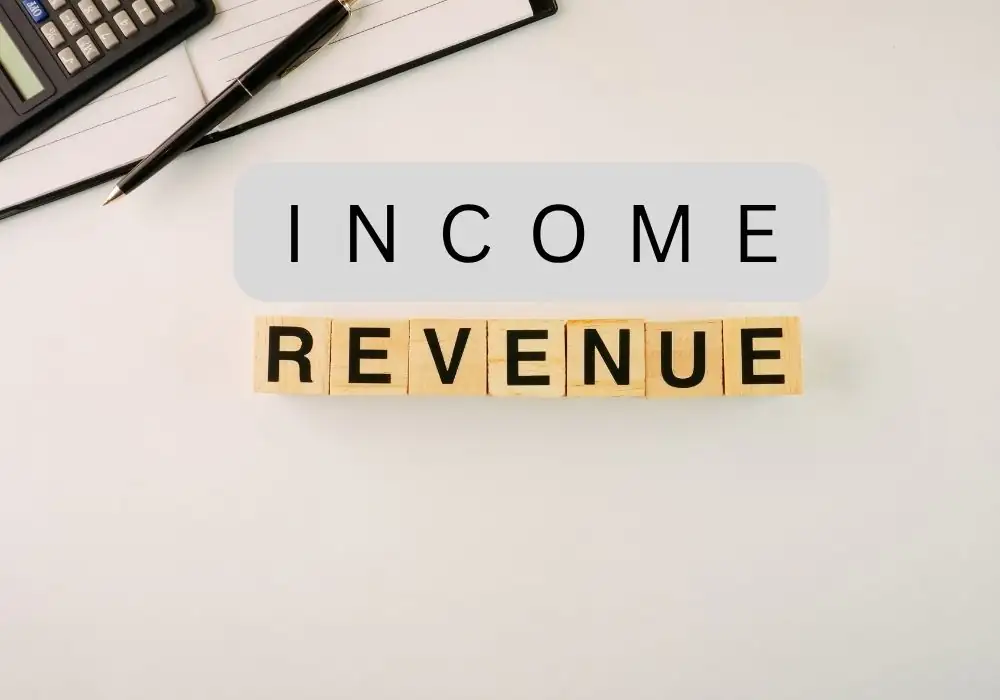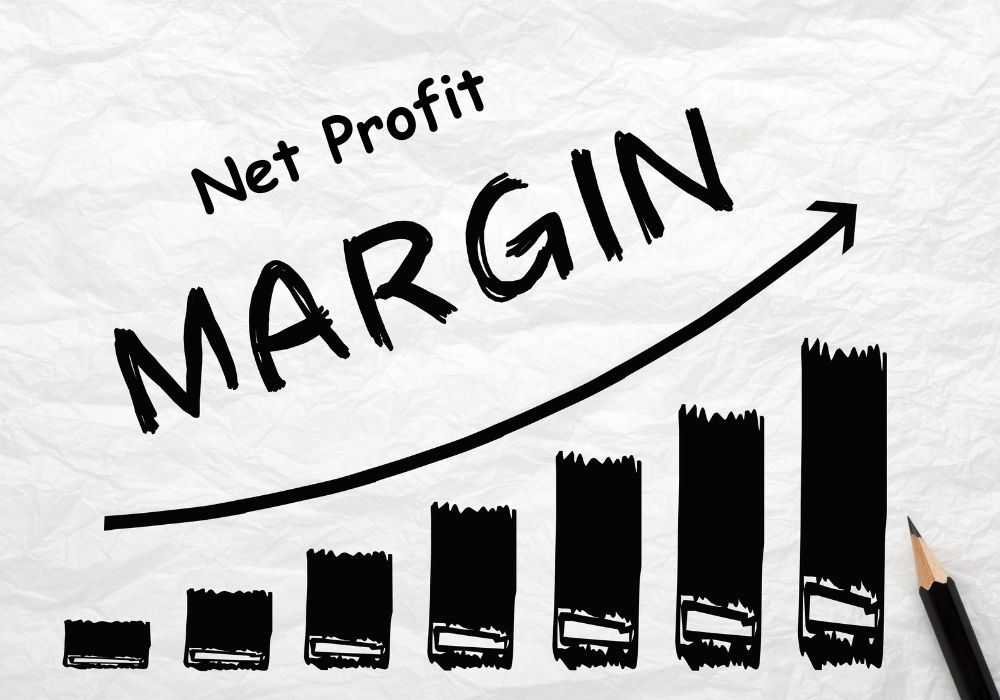You’re running your own gig—a bakery, a tech startup, maybe a dog-walking hustle. The money’s flowing in, and you’re feeling like you’re killing it.
But then you hear folks tossing around “revenue” and “income” like they’re the same thing, and you’re left scratching your head. Spoiler: they’re not twins, not even close cousins.
Mixing them up is like thinking your grocery haul is the same as the meal on your plate. So, let’s break it down, have a heart-to-heart, and figure out what makes revenue and income different—and why it’s a big deal for you.
Grab a coffee, and let’s dive into the juicy details, walk through some real-life examples, and make this crystal clear.
What is Revenue?
Revenue is the money your business pulls in from doing what it does best—your bread and butter. It’s the total cash (or promised cash) from selling your stuff or services before you start paying the bills.
Think of it as the top line on your financial report card, the raw number showing how much you’ve sold. Whether you’re slinging burgers, coding apps, or teaching yoga classes, revenue is the starting point of your money story.
For example, say you run a food truck and sell $2,000 worth of tacos in a weekend. That’s your revenue, no matter if folks paid with cash, a card, or an IOU.
It’s the big, shiny number that says, “Hey, people love our tacos!” But here’s the thing—it’s not the whole picture.
Revenue’s like the pile of dough you’ve kneaded; you still gotta bake it and slice it up to see what you’re really working with.
What is Income?
Now, income—often called net income or profit—is what you’ve got left after all the expenses take their cut.
It’s the bottom line, the real deal that shows if your business is making bank or just scraping by. To get to income, you start with your revenue and subtract everything you spent—rent, supplies, wages, taxes, you name it.
Back to that food truck: your $2,000 in taco sales is awesome, but let’s say you spent $600 on ingredients, $400 on gas and truck repairs, $300 on staff, and $100 on permits.
After all that, you’re left with $600. That’s your income—the cash you can actually pocket, reinvest, or use to treat yourself to a fancy dinner. It’s the part of the pie you get to eat after everyone else grabs their slice.
Difference Between Revenue And Income
Let’s put these two in the ring and see how they stack up:
- Definition: Revenue is the total money from your sales or services before any costs. Income is what’s left after you’ve paid all the bills.
- Where It Sits: Revenue is the top line on your income statement, all big and bold. Income is the bottom line, the final score.
- Timing: You record revenue when you earn it—like when you hand over the goods—thanks to rules like revenue recognition. Income comes later after you’ve tallied up all your expenses for the period.
- Scope: Revenue sticks to your core business sales. Income factors in everything—revenue minus expenses, plus any extra cash from side gigs like investments.
Think of revenue as the full bucket of water you pull from the well. Income is what’s left after you’ve poured out what you owe for the bucket, the rope, and the well maintenance.
Why the Difference Matters?
Getting revenue and income confused is like mistaking the gas pedal for the brakes—you’re gonna crash. Here’s why keeping them straight matters:
- Decision-Making: Revenue shows how much your customers love your stuff, but income tells you if your business is actually working. High revenue with no income? You’re burning cash faster than you’re making it.
- Investor Appeal Investors might drool over big revenue numbers, but they’re really after income. No profit, no party—low income signals trouble, even if sales are through the roof.
- Tax Time: Taxes hit your income, not your revenue. If you’re only eyeing revenue, you might overestimate your tax bill or miss ways to save.
- Growth Planning: Revenue tells you if people want what you’re selling. Income tells you if you can afford to grow, hire, or splurge on new equipment.
Keeping both in focus is like having a GPS for your business—you’ll know where you’re at and where you can go.
Different Flavors of Revenue and Income
Both revenue and income come in a few varieties, and knowing them helps you see the full picture. Let’s break it down.
Types of Revenue
- Operating Revenue: This is the cash from your main hustle—like selling bikes if you’re a bike shop or subscriptions if you’re a streaming service.
- Non-Operating Revenue: This is extra cash from outside your core business, like interest from a savings account or money from selling an old van.
- Deferred Revenue: Ever get paid upfront for something you’ll deliver later, like a yearly magazine subscription? That’s deferred revenue—you hold off counting it until you deliver.
Types of Income
- Gross Income: This is your revenue minus the direct costs of making your product (like flour for a bakery). It’s a halfway point to net income, before overhead like rent.
- Net Income: The real McCoy—what’s left after all expenses, including taxes. This is the number that says, “We’re in the black!” or “Uh-oh, we’re in the red.”
- Operating Income: This is the profit from your core business, after operating expenses like wages but before taxes or interest.
Knowing these types is like knowing the ingredients in your recipe—you’ll spot what’s driving your numbers and where you might need to tweak.
Real-Life Examples
Let’s bring this home with a couple of scenarios to show how revenue and income play out.
Example 1: The Coffee Shop Hustle
You run a cozy coffee shop, and this month, you sell $15,000 worth of lattes, pastries, and merch. That’s your revenue—high-five! But then the bills hit: $5,000 for beans and milk, $3,000 for baristas, $2,000 for rent, and $1,000 for utilities.
After subtracting $11,000 in expenses, your net income is $4,000. That’s what you can use to upgrade your espresso machine or save for a rainy day.
Now, say you also made $1,000 selling an old coffee grinder. That’s non-operating revenue, bumping your total revenue to $16,000. But your income stays at $4,000 because expenses still take their cut.
Example 2: The Freelance Graphic Designer
You’re a freelance designer, pulling in $8,000 a month from client projects. That’s your revenue. But after $2,000 for software subscriptions, $1,000 for marketing, $500 for office space, and $1,500 in taxes, your net income is $3,000. That’s what you’re actually living on.
What if you also earned $500 from selling a stock photo? That’s non-operating revenue, pushing your total revenue to $8,500. But your income still reflects all those expenses, so you’re not suddenly rolling in dough.
Few Drawbacks
It’s easy to trip over your own feet when dealing with revenue and income. Here are some pitfalls to dodge:
- Counting Revenue Too Soon: Revenue recognition rules (like ASC 606) say you can’t count revenue until you’ve delivered the goods or services. Record it too soon, and your books are a mess.
- Ignoring Expenses: Big revenue numbers can make you feel like a rockstar, but if expenses are eating it all up, your income might be peanuts. Keep both in sight.
- Mixing Operating and Non-Operating: Lumping all revenue together can hide how well your core business is doing. Keep them separate to stay sharp.
To stay on top of it, lean on accounting software, check your numbers regularly, and don’t be shy about looping in an accountant when things get tricky.
Importance
Nailing the difference between revenue and income isn’t just about making your accountant smile—it’s about running a tighter ship.
Revenue shows you how much demand there is for your stuff, while income tells you if you’re actually making money.
Together, they’re like a roadmap for your business, helping you decide whether to expand, cut costs, or keep on trucking.
For investors or lenders, income is the real MVP—it proves you’re not just spinning your wheels. Revenue might get their attention, but income keeps it.
And when tax season rolls around, income is what the tax folks care about, so you’ll want it locked down.
Wrapping It Up
Revenue and income are two sides of the same coin, but they’re telling different stories. Revenue is the cash you’re pulling in from sales, the starting line of your financial race.
Income is what’s left after the bills are paid, showing if you’re winning or just barely crossing the finish line.
By keeping them straight, you’ll get a clearer view of your business’s health, make smarter calls, and avoid any nasty surprises.
Next time you’re checking your numbers, don’t just high-five the revenue—dig into the income to see what’s really going on.
With both in your sights, you’ll be ready to take your business to the next level, no sweat. Here’s to keeping your books clean and your profits growing!







